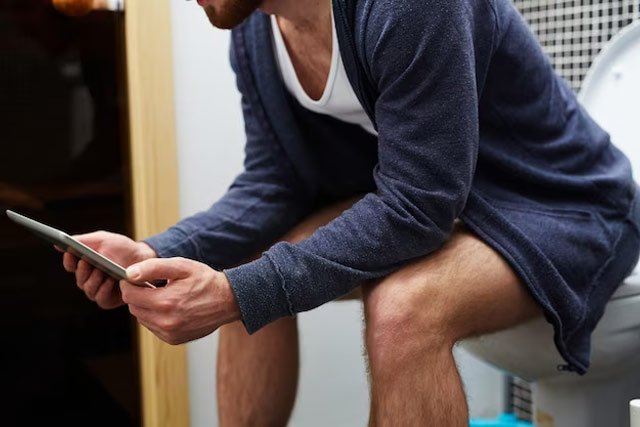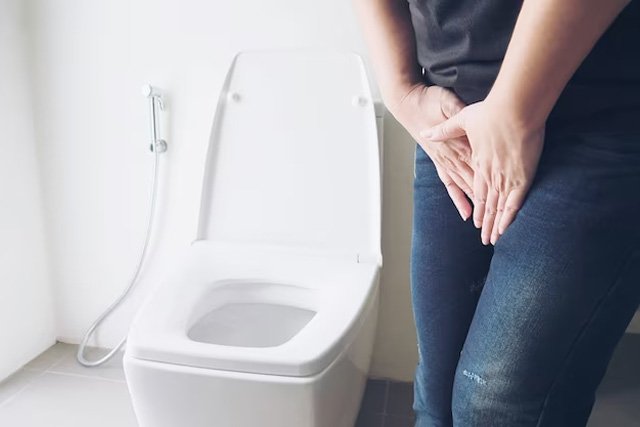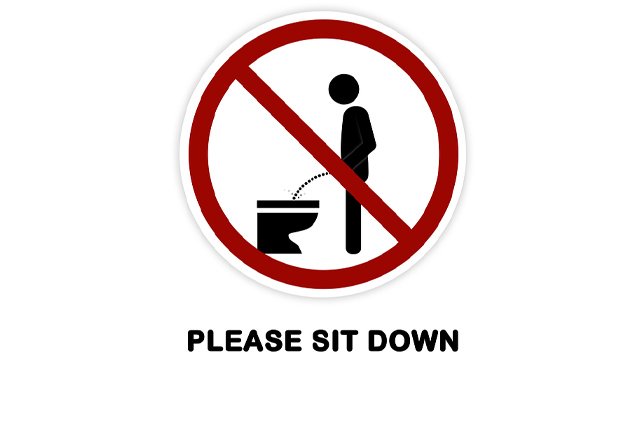When it comes to peeing, sitting down to pee is more hygienic and better for your bladder, a urological surgeon has claimed. His assertion followed a YouGov poll that quizzed men in 13 countries, including Australia.
Germany was where most men sat to pee, with 40% saying they do so “every time or most of the time.” But it’s only a little common in Japan and Britain.
Urination
When your body produces urine, it travels from the kidneys to the bladder. When the bladder is full, nerve endings signal the brain to urinate, causing the internal sphincter muscles to relax and release urine. This sensation can be felt at the base of the penis or vulva in women.
Sitting or standing doesn’t affect pee duration or bladder emptying in healthy individuals. Urinary health depends more on urination habits and timing during the day.
Regularly standing or hovering while peeing can tense pelvic floor muscles and hinder efficient bladder emptying. Sitting on the toilet with feet flat, leaning forward, and placing elbows on knees to relax these muscles is advised. This position also helps reduce urine splattering, preventing discomfort or uncleanliness on the toilet seat.
If you’re experiencing trouble peeing, several things could be the cause. Dr. Kaminetsky states dehydration can actively hinder urination since the kidneys require water. Severe dehydration can pose a danger if it leads to a drop in blood pressure or loss of consciousness. Certain infections like chlamydia, gonorrhea, or herpes can also inhibit urination, causing the prostate to swell.
Benign prostatic hyperplasia (BPH), a condition that can inflame the urinary tract muscles, is a common underlying cause of weak urinary flow or difficulties initiating urination. This can also lead to urinary incontinence when you experience an uncontrollable urge to urinate or incomplete bladder emptying.
Read More: Synthetic Urine Ultimate Guide
Hygiene

Men often make hygiene mistakes, like poor aim or leaving the toilet seat up. However, one change they can easily make is switching from standing to sitting while peeing. According to urologist Dr. Gerald Collins from Alexandra Hospital in England, it’s time for all men to adopt this practice. Dr. Collins made these comments in response to a survey by YouGov, which revealed that 40% of German man always sit down to pee, while only 9% of British men and 10% of Americans do the same.
The urologist elucidated that sitting to pee actively ensures complete relaxation of the muscles in the pelvis and spine, facilitating easier bladder emptying for men. He also noted that the seated position may help prevent prostate problems, which can occur as men age. It’s estimated that around 80 percent of men over 80 have enlarged prostates, which can block the urethra.
Collins emphasized the importance of men sitting down to pee to prevent the spread of bacteria in urine, which can harm pregnant women and the elderly, causing health issues like urinary tract infections and sepsis.
While some view sitting down to pee as a sign of respect toward women, others argue it suppresses masculine traits. Nonetheless, multiple studies support the health benefits of men adopting this practice.
A recent study published in Nature Communications showed that a sedentary lifestyle increases the risk of cardiovascular disease, diabetes, and high blood pressure. Reduced activity leads to higher fat concentration in the blood, causing inflammation and heart disease.
Pain

According to BowlsEye, there are times when sitting down to pee is the best option. It’s more comfortable, especially if you suffer from bladder pain or an enlarged prostate, which can lead to urinary tract problems, including cysts and infections. It also reduces the amount of urine splashes against you when you stand up, making for a less hygienic bathroom experience.
For men with an enlarged prostate (benign prostatic hyperplasia, or BPH), sitting down to pee can help relieve symptoms of the condition. The condition causes the prostate gland to enlarge, which can pressure the urethra, making it harder for the bladder to empty. The symptoms include:
- A burning sensation.
- An incomplete feeling that the bladder hasn’t been completely emptied.
- A weak or interrupted urine flow.
When a man sits down to pee, the prostate can relax, reducing pain and increasing the stream’s speed. It can also lower the pee stream’s impact angle, reducing the risk of painful irritation to the urethra. Drinking water or other low-sugar liquids during urination and utilizing the Valsalva maneuver, which involves applying pressure to the abdomen while taking deep breaths, can enhance the effect.
However, it’s important to note that prostate size doesn’t always cause a man to have urinary symptoms. Other factors can affect a person’s ability to urinate, such as changes in muscle tone in the bladder wall. The urethra may also narrow due to scar tissue from surgery, injury, or damage caused by an infection.
Although most young men can pee standing up without difficulty, sitting in the stall is advisable if you’re concerned about your prostate. It promotes hygiene and can prevent uncomfortable situations and unnecessary visits to the emergency room.
Mental health
Most men still choose to stand while peeing, but sitting down might be better. Standing can pressure the bladder, causing infections, while sitting allows urine to flow more easily and helps with issues like an enlarged prostate. When you sit, your pelvic and spine muscles relax, making it harder for the bladder to empty fully. The urologist recommends sitting down as the best option for most men.
In fact, according to YouGov’s research, German men are the most likely to sit while peeing. The survey found that 40% do it every time, compared to 25% of Australian and American men. British men are the least likely to sit while peeing, with 33% saying they never do.
Men not sitting while urinating might fret over being perceived as less masculine. This concern is particularly evident in Germany, where individuals label men who choose to sit while urinating as “sitzpinkler” to insult them, implying a lack of courage to stand up.
Fortunately, that’s something only some people worry about in other countries. In Japan, for example, the percentage of men sitting while peeking is increasing rapidly. The country is known for its advanced toilets with comfortable seats that offer jet stream, heating, and massage functions. Sitting down while peeing helps avoid messes in public bathrooms and contributes to the trend.




